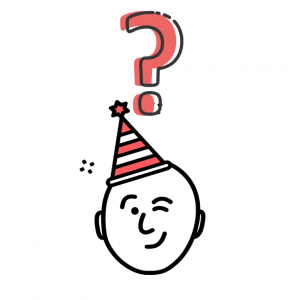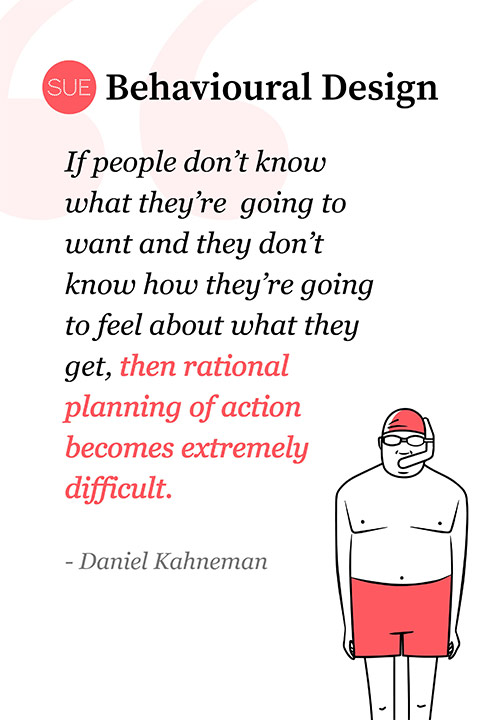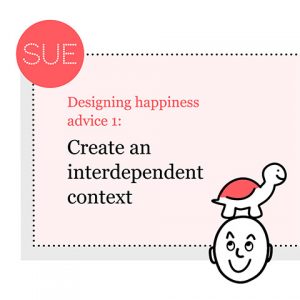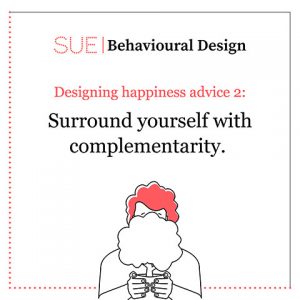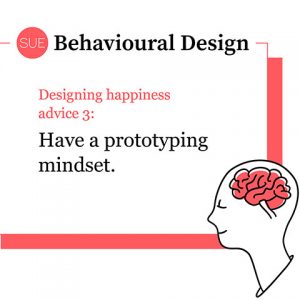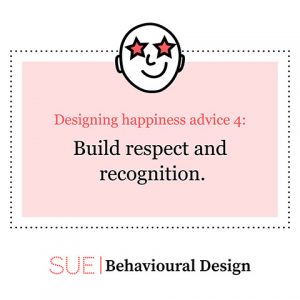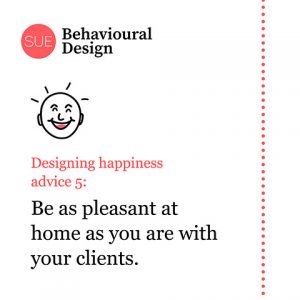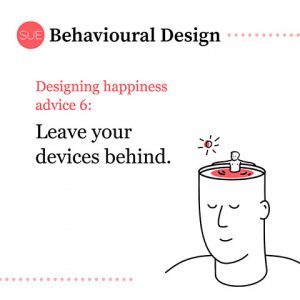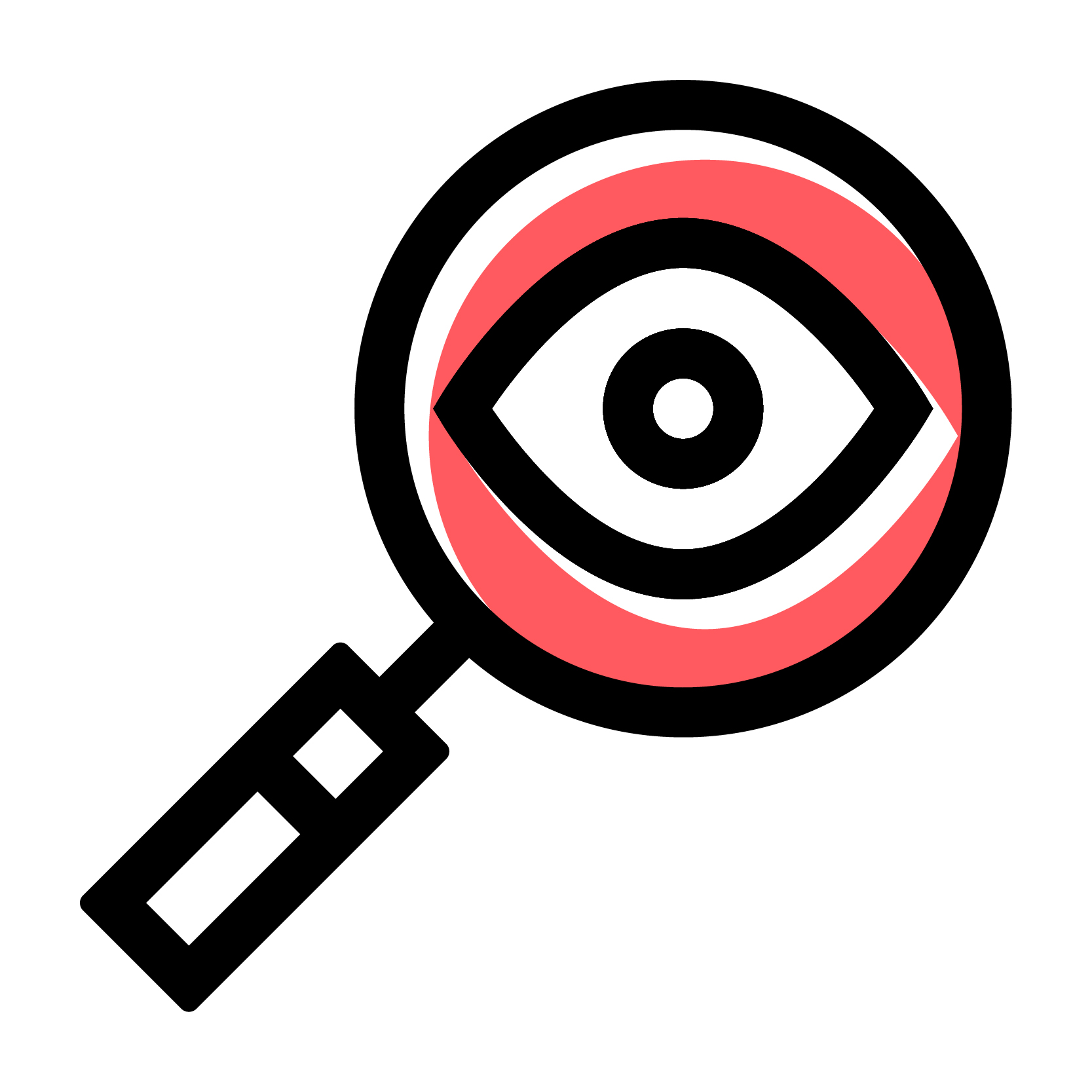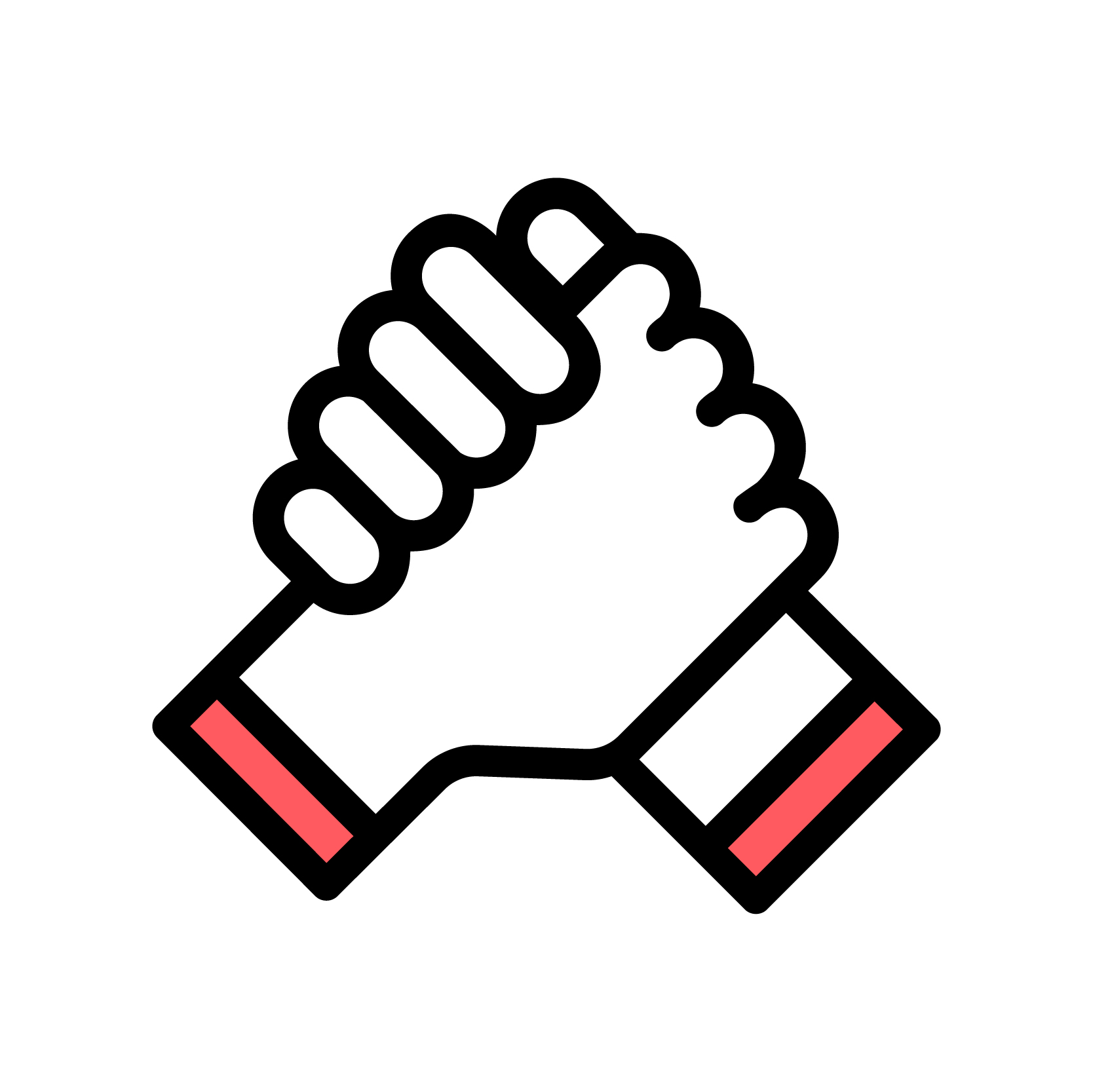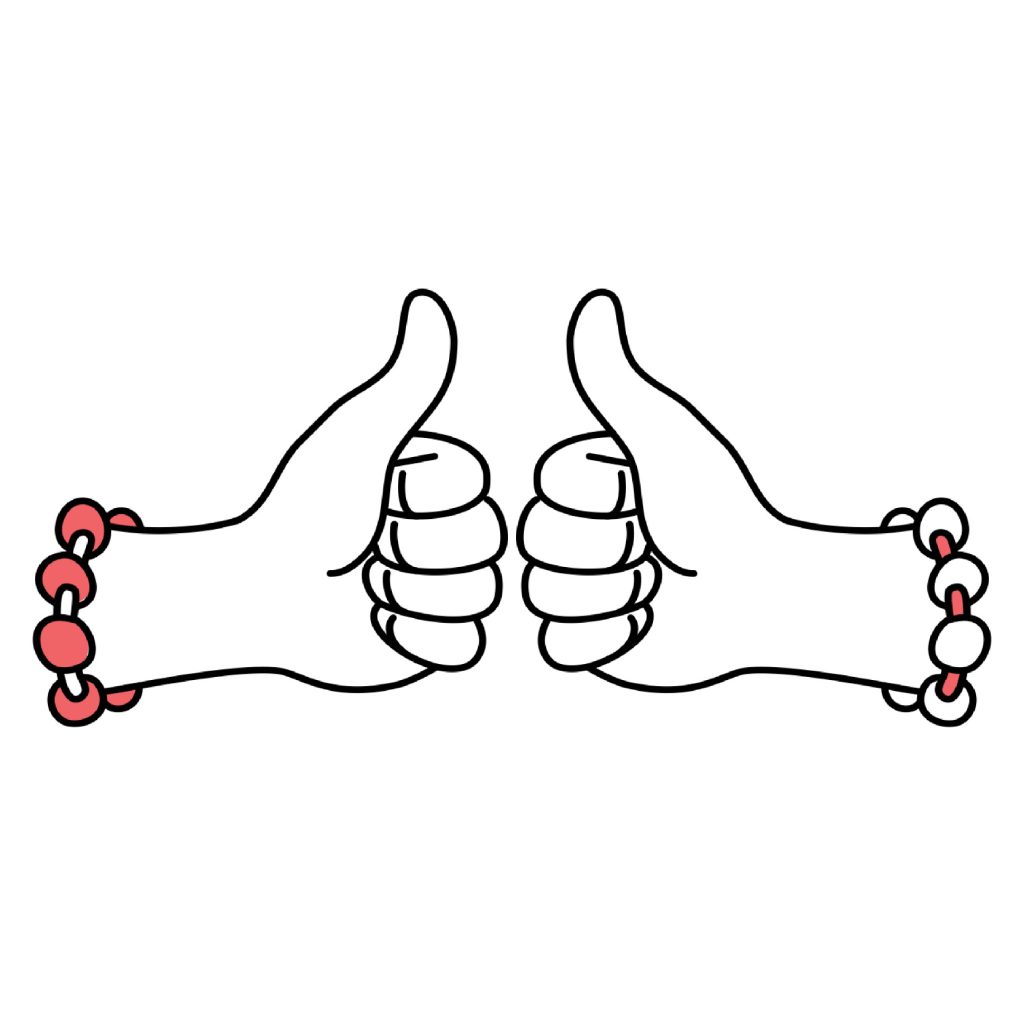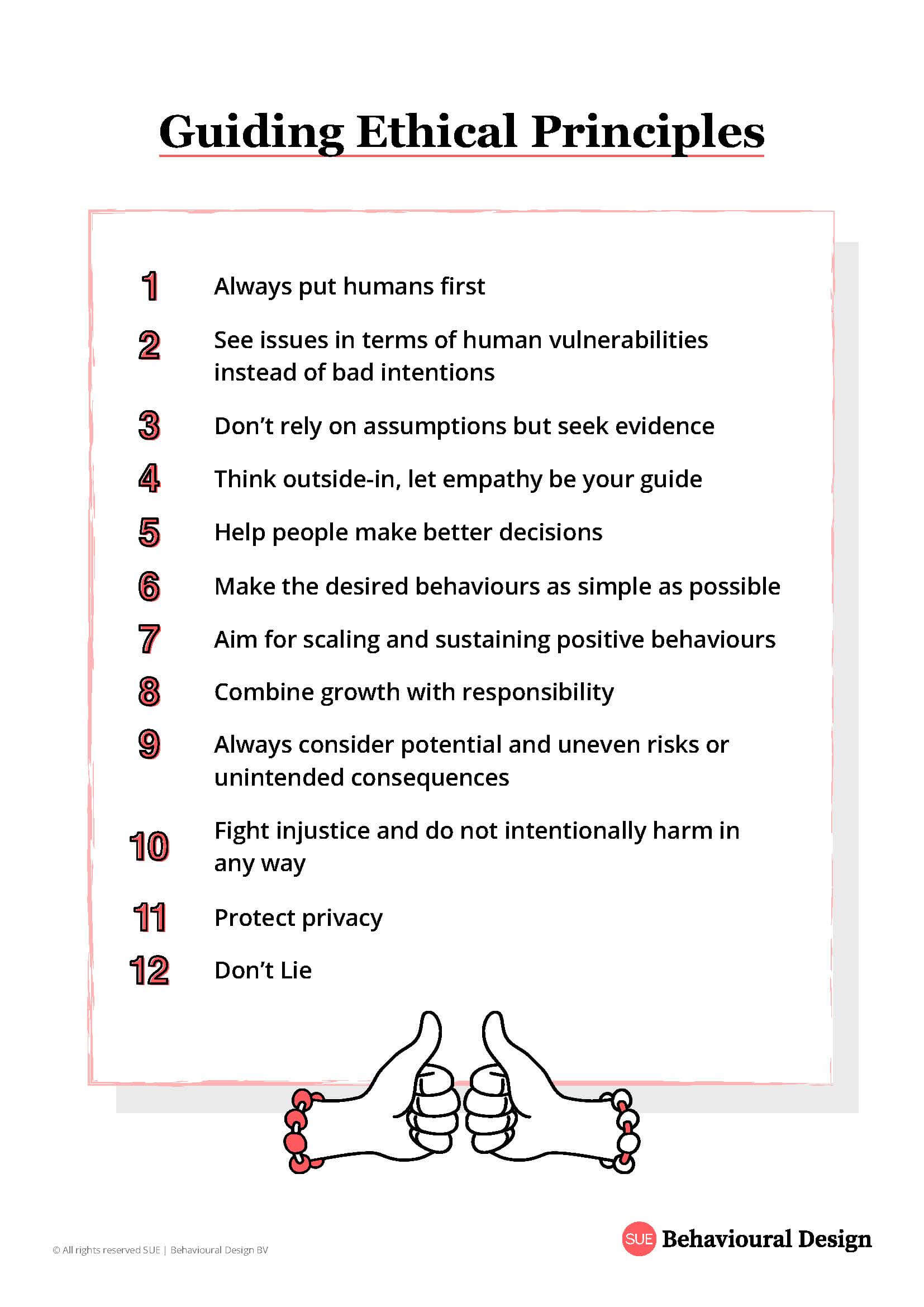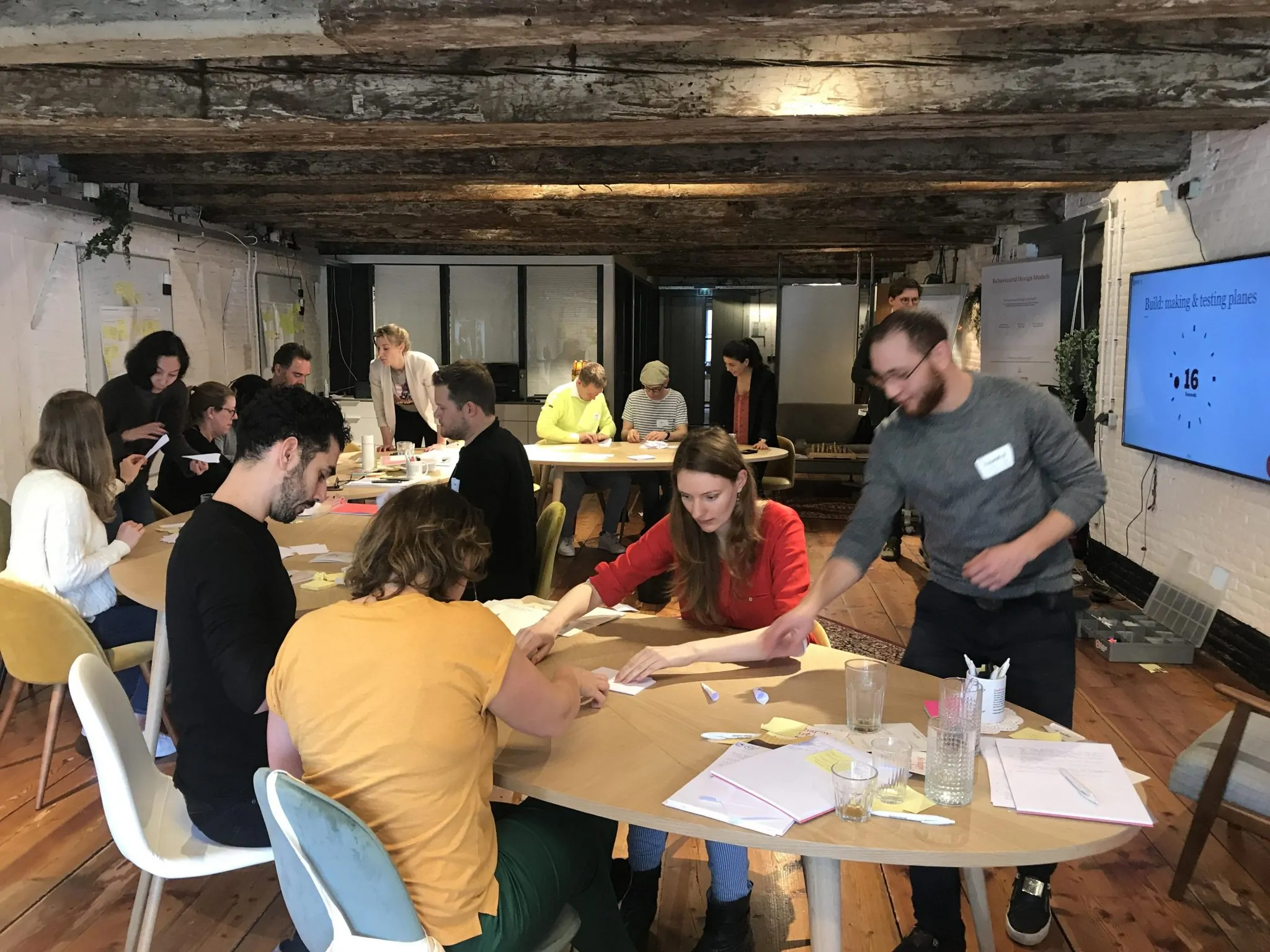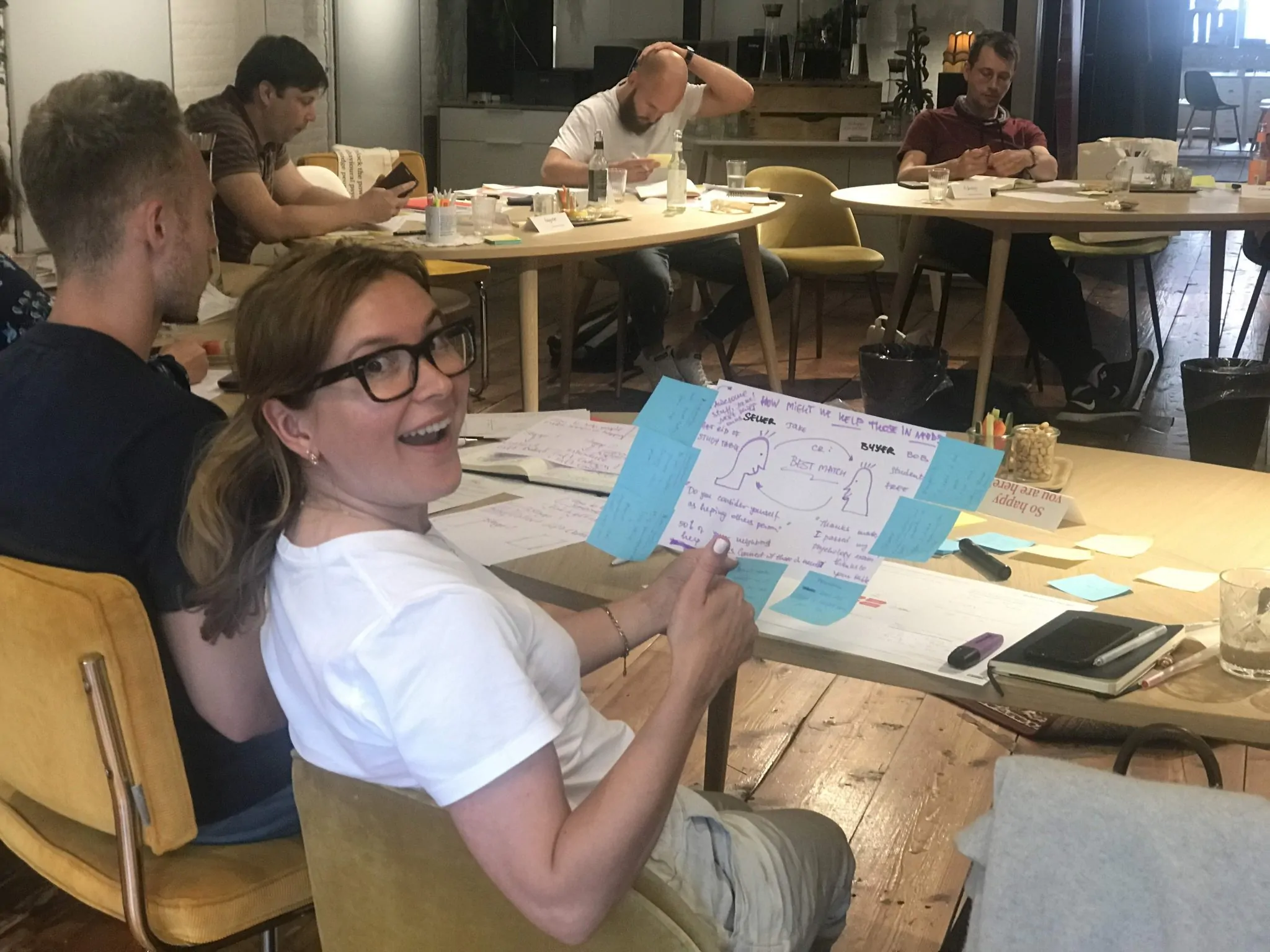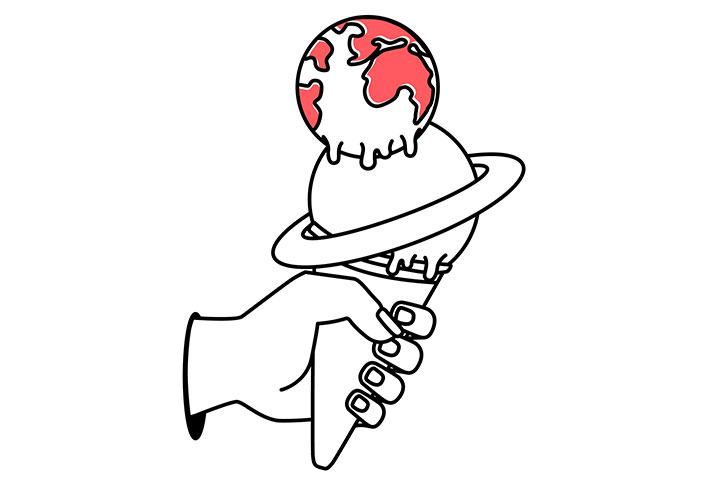
This blog post is an extended introduction to Behavioural Design. You will get a clear idea about what it is, how you can use it in your professional and personal life to influence minds and shape behaviour, and what you could do to learn more about it. Moreover, this blog post is the perfect entry to most other blogposts we published on the SUE Behavioural Design website.
1. Behavioural Design is about influence
Behavioural Designers combine Psychology, Design, Technology, and Creative Methods to find out why people do the things they do and to figure out through experimentation how to activate them to change their behaviour.
2. Behavioural Design is a method
The best way to think about Behavioural Design is to think of it as the combination of Design Thinking with the Science of Influence. Design Thinking is the method through which designers solve problems. Designers start with empathy. Through interviews and observations, they try to “fall in love with the problem”: Why do people do what they do and where could we spot opportunities for improvement? This insight phase forms the groundwork for creativity. First, designers develop as many ideas as possible, and then they prototype the most promising ones. They take the prototypes back to the real world and test them with real people to learn and observe how the prototype influences the targeted behaviour. Design Consultancy Ideo, the godfathers of Design Thinking, explain the process like this:
When you combine the method of design thinking with behavioural science, you will get design thinking on steroids or Behavioural Design Thinking. Because a better understanding of human psychology you will get:
1) Better insights into why people do what they do;
2) Better ideas on where to look for solutions;
3) Better prototypes, because you will have a much sharper understanding of what specific behavioural outcome you’re designing for.
At SUE the essence of what we do is to train the Behavioural Design Method© at our Behavioural Design Academy and at in-company training and we run the Behavioural Design Method© in Behavioural Design Sprints together with our clients.
More about Behavioural Design as method:
Would you like to power up your team or project with behavioural intelligence?
Feel free to contact us. We are happy to tell you more about our consultancy or academy. Helping you innovate, transform or grow levering insights from behavioural science in practice.
3. The ethics of Behavioural Design
Behavioural Design is dark wisdom. The difference between positive influence and manipulation is a very fragile line. In the end, we have to be aware that Behavioural Design is about using deliberate action and techniques to influence the behaviour of the other in the direction you want.
The problem is that those who want to design for good quite often feel bad about using dark forces. Whereas those who use this dark wisdom to manipulate and mislead are usually much more motivated, advanced, and have fewer scruples about its application. Think about how extreme-right populists exploit fear and uncertainty, or think about how technology companies use our vanities and our desire for social recognition and belonging to the extent that it leads to (social media) addiction.
The world of interaction design is full of “dark patterns“, which are manipulative ways to present choices to us in such a way that they manipulate us into making a specific decision, whether we want it or not.
At SUE, we are very sensitive to this ethical component. We even encoded it in our mission. The SUE mission is “to unlock the power of behavioural psychology to help people make better decisions in work, life and play”. Our point of departure for designing interventions for behavioural change always starts with the question, “How might we help people to make better choices? Moreover, how could we create products, services, and experiences to contribute to helping people achieve their goals or dreams? Our commitment to this mission is sacred, even to the point that we refuse to accept work that doesn’t match this mission. You can find more about this way of thinking below at “5. Outside-in Thinking“.
More on the ethical side of Behavioural Design:
- Behavioural Design Ethics: our take on things
- How to influence those in power
- Why Nir Eyal is a bit of a hypocrite
- How to win wars by influencing people’s behaviour?
4. Behavioural Design is about designing choices
Multiple levels of influence
In a certain sense, the term ‘Behavioural Design’ is a little bit misleading. Behavioural change is the outcome we aim for when we design an intervention. When we want to achieve this outcome, we need to create interventions on multiple levels at the same time:
- Design attention: How do you make sure something catches people’s attention?
- Trigger curiosity: How do you get people to invest time and mental energy to learn more about what you want from them?
- Change the perception: how do you get something to stand out as the attractive option between other choices? How do you design the desired perception?
- Design the experience: How do you get someone to have a positive feeling? How can you reduce stress or uncertainty?
- Trigger the behaviour: How do you trigger the desired behaviour? How can you increase the chance of success that people act upon your trigger?
- Change habits: How can you get people to sustain the behaviour? Most behaviours require much more than a one-time action. Think about saving, living healthy, exercising, recycling, collaborating, etc.
Thinking fast and slow
This simple list of influence levels teaches us that:
Behavioural Design is all about how we design choices and how we present those choices.
Behavioural Design has everything to do with human decision-making and how the brain works. The cornerstone of human decision-making is the masterpiece “Thinking Fast and Slow” by Kahneman and Tversky. This book – awarded with the Noble Memorial Prize in Economic Sciences in 2002 – is the fascinating journey of the collaboration between two Israeli psychologists and their discoveries of how the mind works. This book is the ultimate work on thinking about thinking.
Kahneman and Tversky discovered that about 96% of our thinking is automatic and unconscious. Our brain is making most of the decisions for us by taking shortcuts – which they call heuristics -, with the goal of not having to invoke the 4% bandwidth of our slow, rational brain. In a way:
Influencing behaviour comes down to helping people to decide without having to think. Because the more we need to think about something, the more stress we get, the less we end up making choices.
Since 2018, we now have a second psychologist in the ranks of noble prize winners. Richard Thaler built upon the work of Kahneman and Tversky and zoomed in on how to make use of System 1-System2 thinking to nudge people into better decision-making in wealth, health, and happiness.
Our hard-wired tendency to persuade
When it comes to our attempts to influence minds and shape behaviours, our biggest fallacy is that we always tend to persuade the other with rational arguments. The problem with persuasion is two-fold:
- Persuasion evokes system 2-thinking, and we don’t like that. When you try to persuade someone, you want them to think about your argument. Thinking complicates things.
- System 2 is the little slave of system 1: we only accept rational arguments or facts when they align with how we already think about matters. You can only persuade someone who’s already convinced.
The real challenge is to make a decision making extremely easy. More about designing choices:
Want to learn how to design behaviour?
Join our two-day Fundamentals Course and master a hands-on method to use behavioural science to develop ideas that change minds and shape behaviour.
5. Behavioural Designers think ‘outside-in’
When we try to influence minds and shape behaviour, the most common mistake we make is to think inside-out. We take the benefits of our product or service as our point of departure, and we try to figure out how we could pitch those benefits so that people would realize the value of what we have to offer. Behavioural Designers work the other way around.
We take the human behind the customer as our focal point, and we try to figure out what this human needs to be successful.
Which anxieties, doubts, prejudices or bad habits he holds stand in the way of embracing the desired behaviour or which pains or frustrations we could solve for him.
The SUE | Influence Framework©
We developed the SUE | Influence Framework© as a tool to do outside-in thinking systematically,. This model brings all the forces to the surface that influence the behaviour of the people for whom we need to design interventions. The Influence Framework© consists of five questions we need to answer to understand why people do what they do and how to get them to act:
- Job-To-Be-Done: What is the underlying goal for which people would have to embrace the new behaviour? How might we align the desired behaviour with goals that matter to them?
- Pains: What are possible frustrations and pains in their current behaviour, for which we need to come up with a solution?
- Gains: What are the benefits we have, compared with their current solutions?
- Anxieties: What are anxieties, doubts, prejudices or other barriers that prevent someone from embracing the new behaviour?
- Habits: Which habits keep them locked in their current behaviour?
Finding the answers to these questions will provide you with a blueprint of where to spot opportunities for behavioural change. In this video, you can find a brief explainer of the SUE | Influence Framework©.
More about outside-in thinking:
- Three Cardinal Sins against Customer-Centricity in Finance
- Clayton Christensen explaining Job-to-be-done Thinking (the famous Milkshake example)
6. Behavioural Designers work with principles from the science of influence
The next step in the Behavioural Design Method© is about turning a deep understanding of the forces that explain people’s behaviours, into ideas for behavioural change. These are two different games. Whereas the SUE | Influence Framework© uncovers the unconsciousness of people, is this part about applying principles from the science of influence to come up with solutions on how to change behaviour. We have developed a helpful tool for this: the SUE | SWAC Tool©:
It is foremost a very easy-to-use tool. It explains which four pieces of the puzzle you need to solve to create a context that will persuade someone into doing something and to have them keep doing it. What makes the tool so easy to use in practice, is that anytime you want to design for behavioural change, all you have to do is ask yourself four simple questions:
- How can we make sure someone WANTS to perform the new behaviour?
- How can we make sure someone CAN perform the new behaviour?
- How can we SPARK new behaviour at the moments that matter?
- How can we activate this new behaviour AGAIN and again?
When the new behaviour does not happen, at least one of those four elements is missing. The most important implication of this is that by using the SUE | SWAC Tool© as a guide you can quickly identify what stops people from performing the behaviours that you seek.
If a sufficient degree of capability (CAN) to perform a behaviour is matched with the willingness (WANT) to engage in that behaviour, all that is then needed for the behaviour to occur is to set someone into action (SPARK) at the Moments that Matter.
Maybe you notice that in the tool it says moments that matter. Not one moment, but moments. As we learned, behavioural change doesn’t happen overnight. Most of the times someone needs to be reminded of the desired behaviour more than once for it to happen in the first place. Furthermore, behaviour becomes easier when repeated. Therefore, we have to make sure we SPARK someone AGAIN and again to activate the desired behaviour. So, you need to design several interventions at multiple moments that matter. In practice your intervention strategy will look something like this:
The objective of most intervention strategies is to not only to change behaviour, but to change this new behaviour into a routine behaviour (a habit), so the new behaviour will stick.
Often your desired behaviour is new behaviour for people and that’s why it is important to spark behaviour AGAIN and again. Only then the behaviour will take place, as illustrated above as the BEHAVIOURAL CHANGE THRESHOLD. When your objective is to design repeat behaviour, it almost goes without saying that you have to make sure the desired behaviour is performed repeatedly. If you can make someone perform new behaviour over and over AGAIN, it can become automatic.
7. Behavioural Designers research, prototype, test
The more familiar you get with how the brain works and how influence works, the more you become aware that human behaviour obeys a different kind of logic than formal logic. Rory Sutherland calls this “psycho-logic” in his brilliant book Alchemy.
The way people make decisions is highly context-sensitive. These decisions are full of stories they tell themselves and full of irrational beliefs they hold. Furthermore, even the slightest difference in how something is framed can dramatically affect how people perceive the meaning. When an English native speaker says they think something is “interesting”, it usually means precisely the opposite. Whereas a non-native Dutch audience would think “interesting” means what they think it means.
The importance of doing the research yourself
That’s why research and prototyping are so important. Before you come up with an idea for behavioural change, you first need to fall in love with the problem. You observe or interview humans and try to put yourself in their shoes. You’ll be surprised about how many thoughts and beliefs you hold are projections of your limited worldview onto the world of the target audience you want to influence.
Prototyping and testing are all about finding out which variation of your intervention has the highest potential to design perception, attention, curiosity, experience, behaviour or habit. Even with the clearest of insights, you can still develop an intervention that ultimately misses its desired effect. What you thought your intervention was supposed to trigger sometimes triggers the exact opposite.
More about prototyping and testing:
Want to shape behaviour and decisions?
Then our two-day Fundamentals Course is the perfect training for you. You will learn the latest insights from behavioural science and get easy-to-use tools and templates to apply these in practice right away!
8. Domains of Behavioural Design
The number of applications for Behavioural Design is endless. Because in the end, most of the things we do as humans aim at influencing the behaviour of others. You can apply it from managing teams to the design of products. Or from getting people to buy products to changing the way they perceive a service or experience. And from the creation of financial habits, personal habits and healthy habits till the raising of children. At SUE, we’re particularly fascinated by six specific domains for behavioural change:
- customer behaviour (product, marketing, sales)
- citizen behaviour (government/society)
- financial behaviour (financial independence)
- voter behaviour (politics and government)
- self-improvement (personal development)
- team-behaviour (organisational design)
Most of our blogs and our weekly newsletter “Behavioural Design Digest” is about one of these topics.
9. Start to learn more about Behavioural Design
Now you have a deeper understanding about what Behavioural Design and how you can apply the Behavioural Design Method to influence minds and shape behaviour, there’s a couple of next steps you can take to learn more about the method:
- Subscribe to our weekly newsletter Behavioural Design Digest, in which we take a closer look at how influence works in daily life.
- Subscribe to one of the upcoming editions of our Behavioural Design Academy courses and master the SUE | Behavioural Design Method© to create next-generation, people-centred products, services, campaigns or policies.
- Book in-company training for your team and learn the method while applying it to a critical business challenge for your organisation.
- Hire SUE to run a Behavioural Design Sprint to fast-track your innovation, transformation or growth by leveraging behavioural science to develop people-centred products, services, campaign or policies with an evidence-based approach.
- Book SUE for a keynote or workshop (contact us).
- Check or frequently asked questions and discover answers to questions you didn’t even know you had.
How do you do. Our name is SUE.
Do you want to learn more?
Suppose you want to learn more about how influence works. In that case, you might want to consider joining our Behavioural Design Academy, our officially accredited educational institution that already trained 2500+ people from 45+ countries in applied Behavioural Design. Or book an in-company training or one-day workshop for your team. In our top-notch training, we teach the Behavioural Design Method© and the Influence Framework©. Two powerful tools to make behavioural change happen in practice.
You can also hire SUE to help you to bring an innovative perspective on your product, service, policy or marketing. In a Behavioural Design Sprint, we help you shape choice and desired behaviours using a mix of behavioural psychology and creativity.
You can download the Behavioural Design Fundamentals Course brochure, contact us here or subscribe to our Behavioural Design Digest. This is our weekly newsletter in which we deconstruct how influence works in work, life and society.
Or maybe, you’re just curious about SUE | Behavioural Design. Here’s where you can read our backstory.

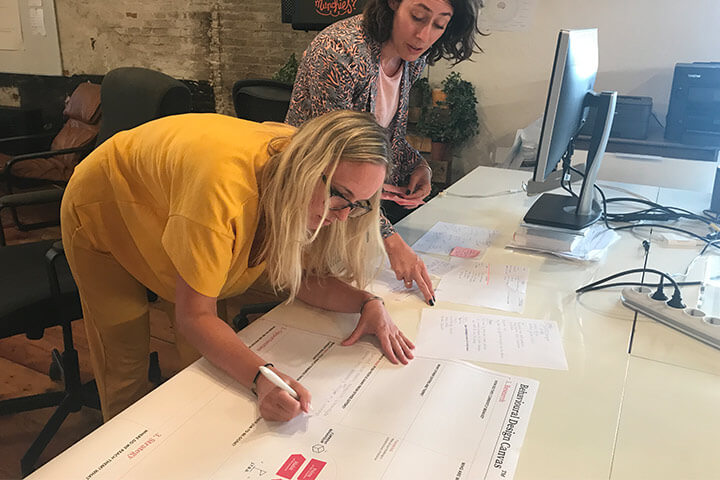


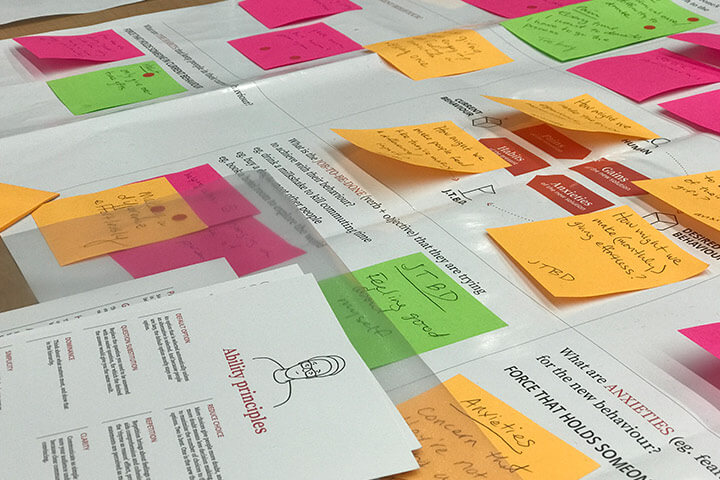
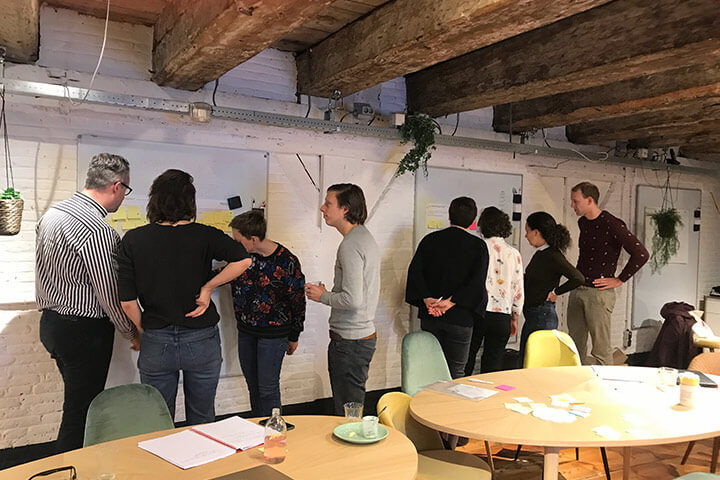
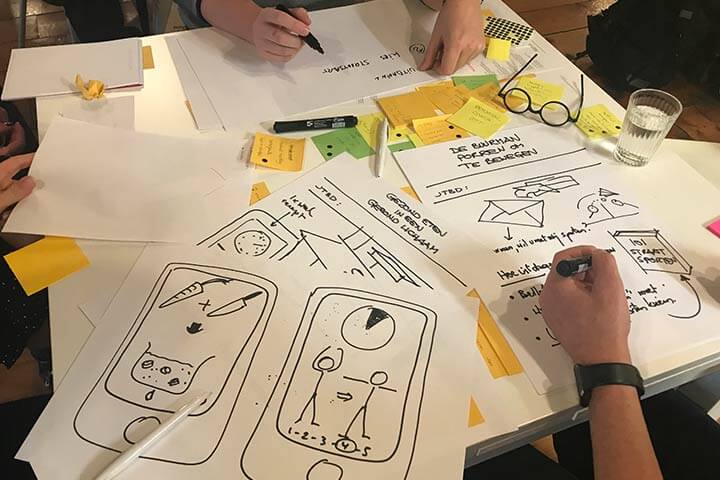
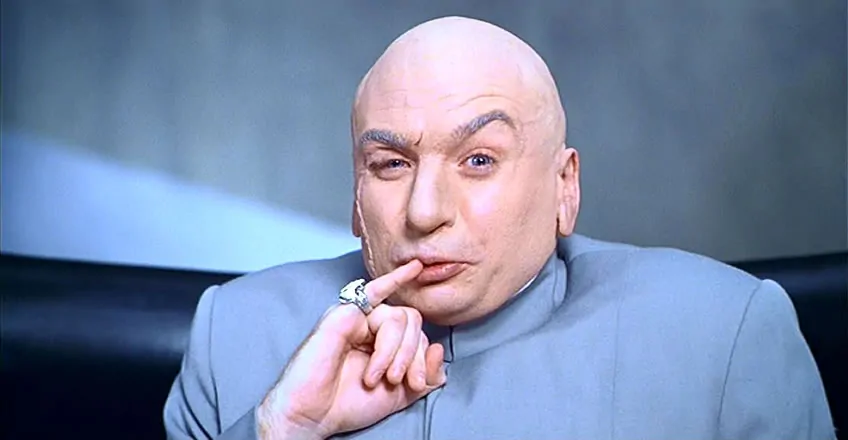
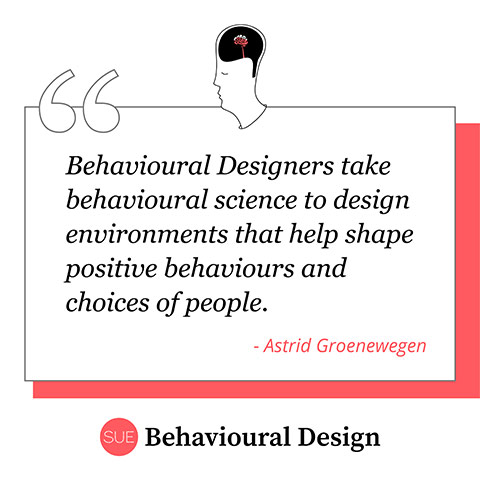
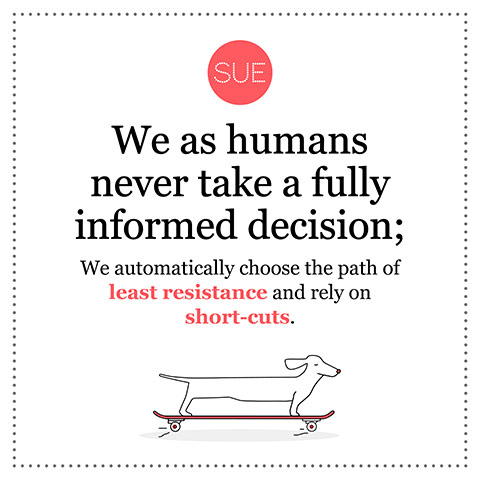
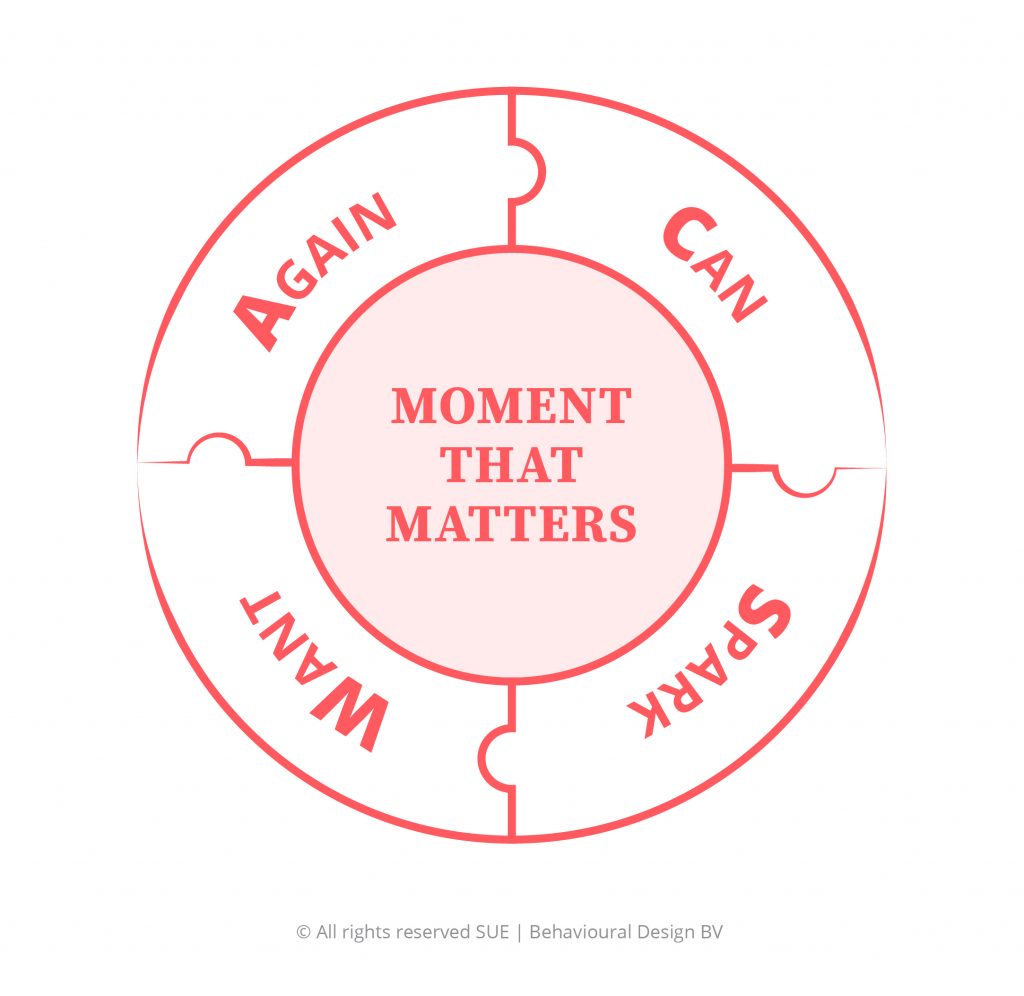
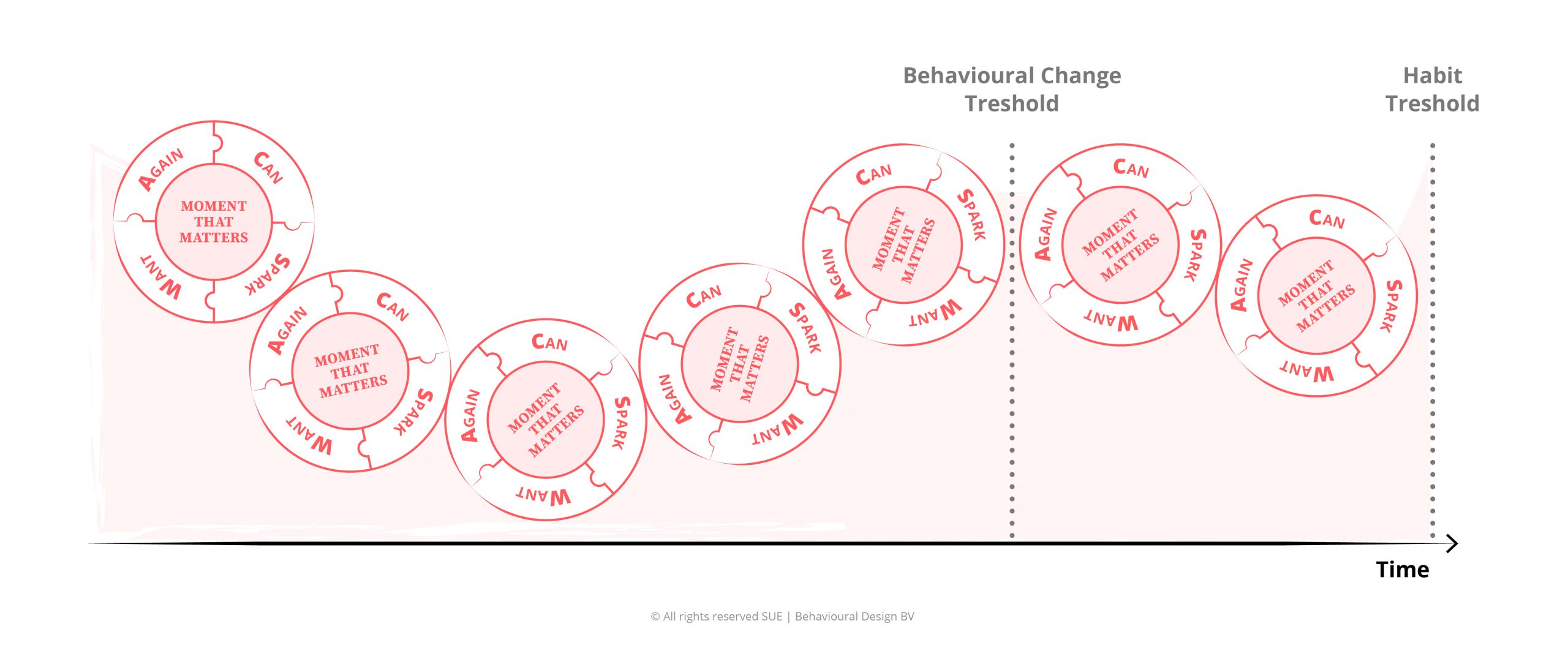
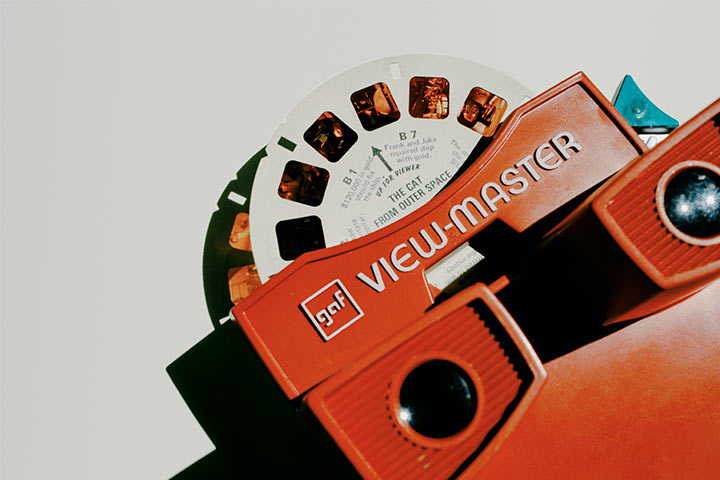
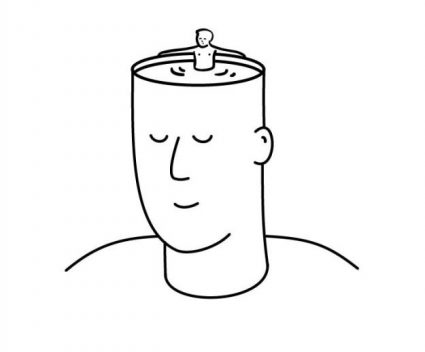
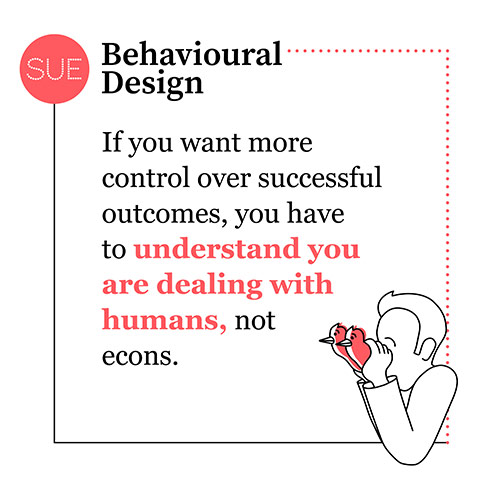






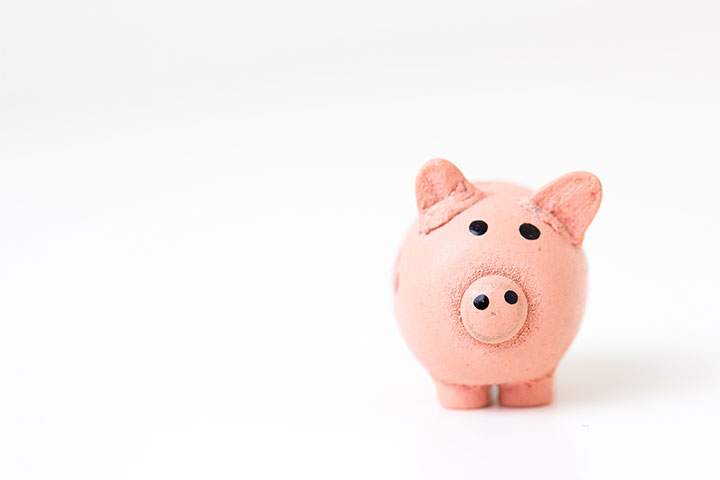
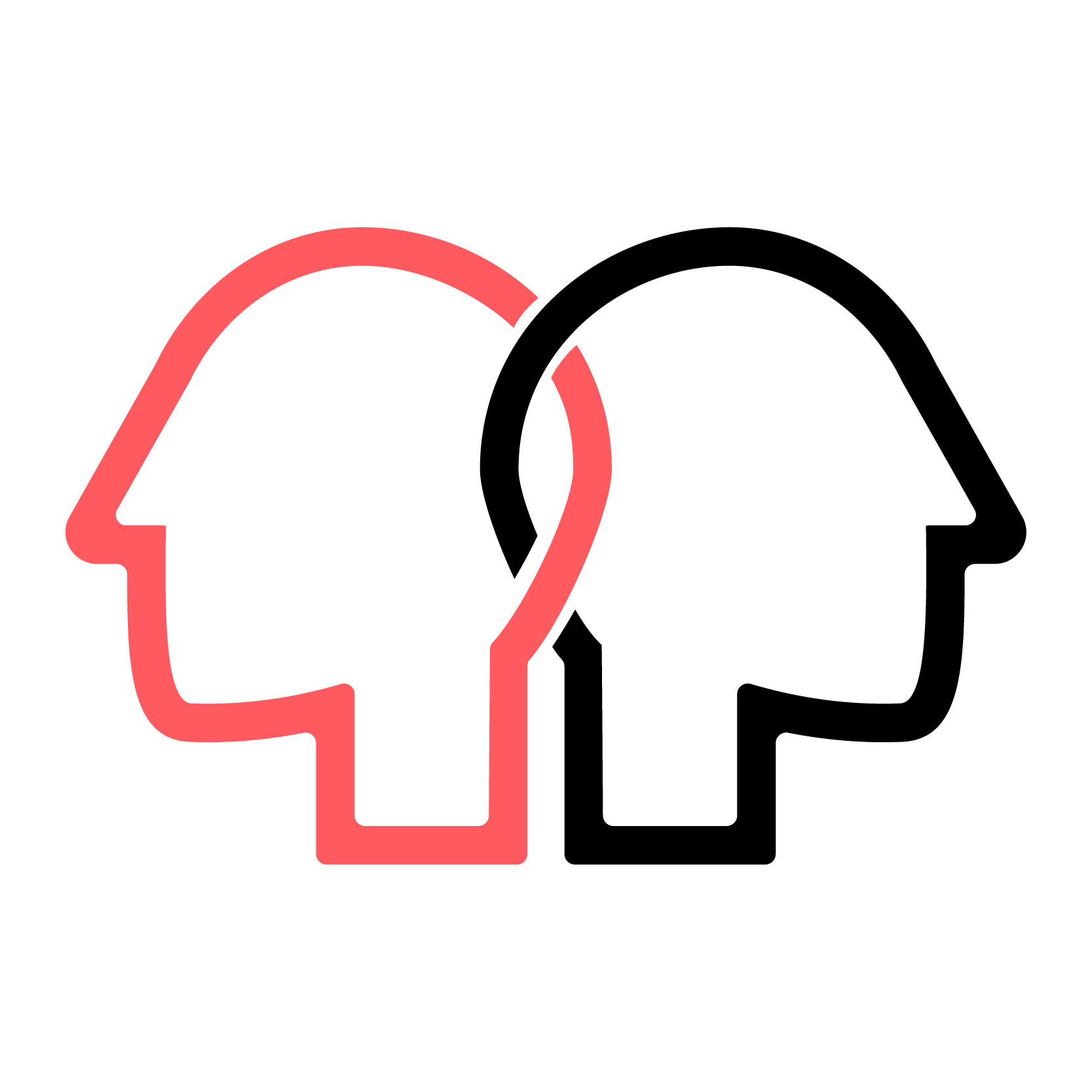 Mental accounting: How humans violate the economic theory
Mental accounting: How humans violate the economic theory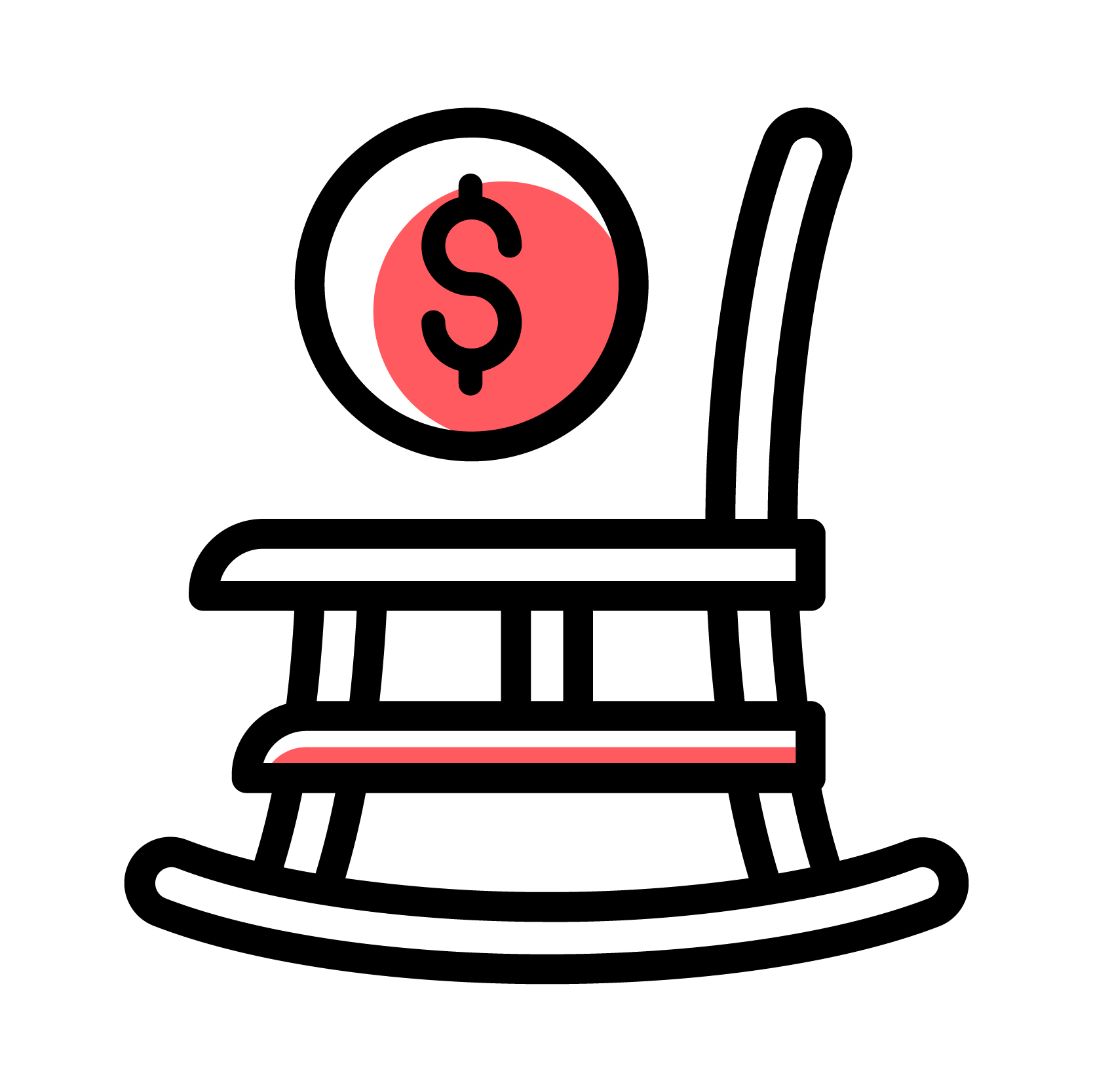
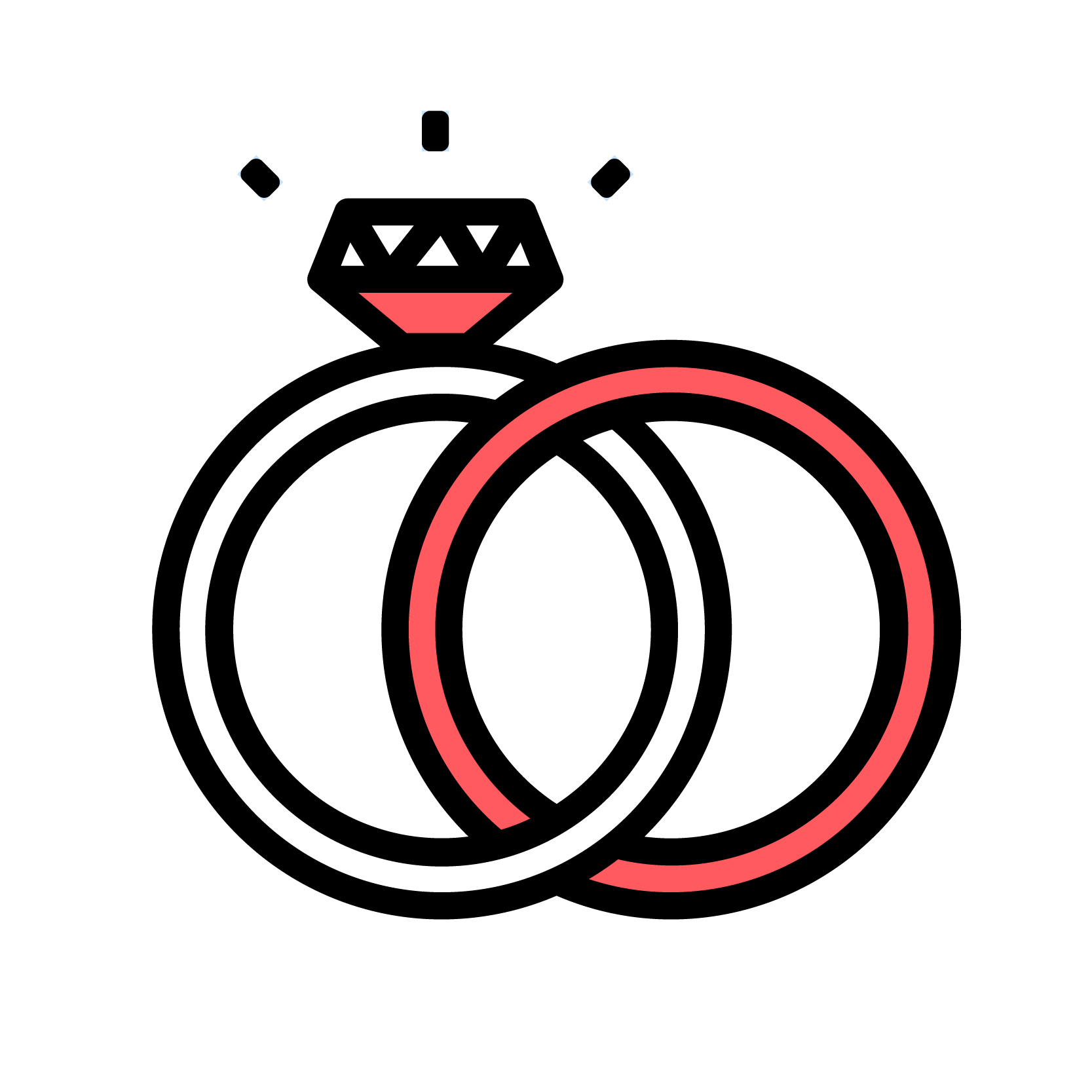 Mental accounting: The sunk cost effect
Mental accounting: The sunk cost effect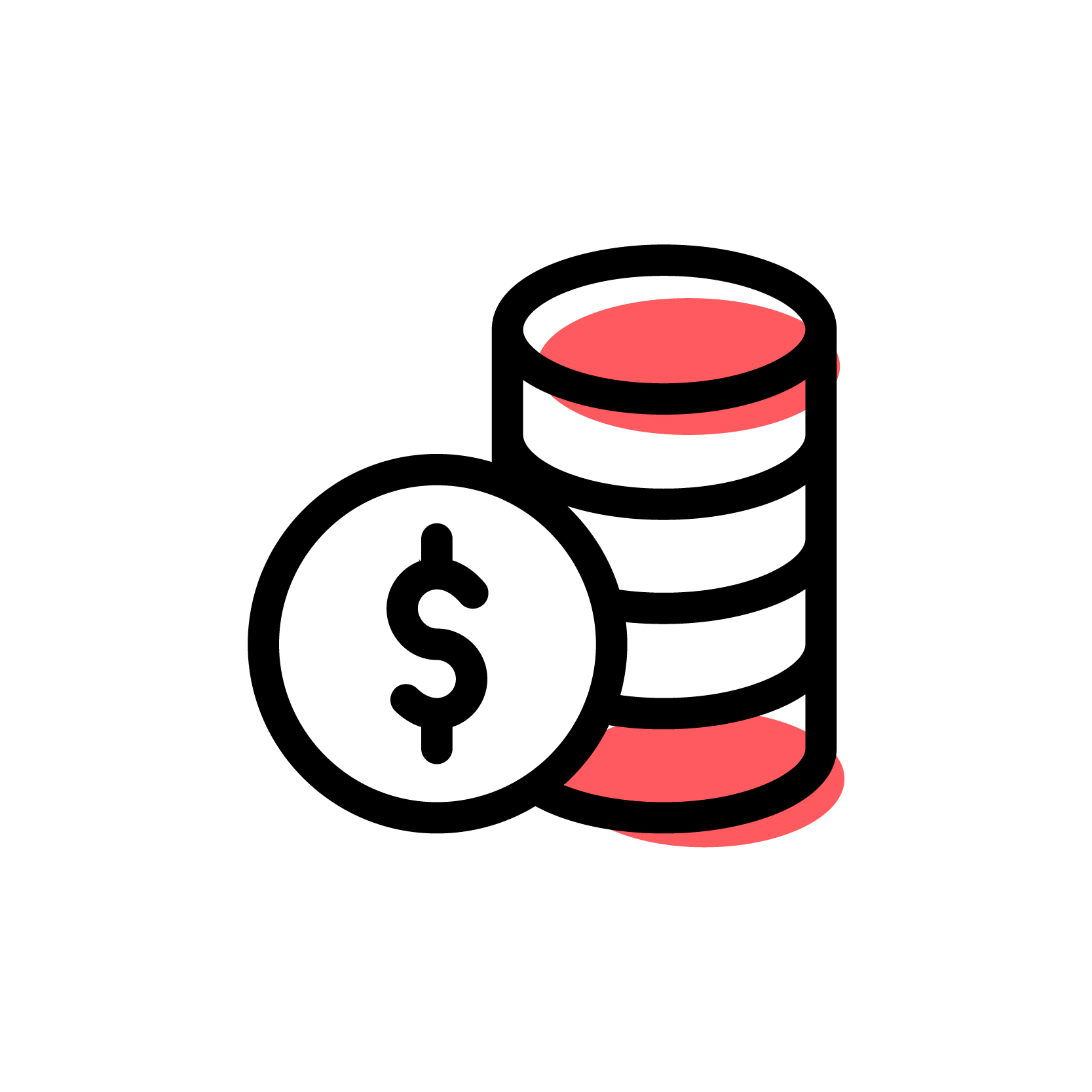 Mental accounting: Using it for better decision-making
Mental accounting: Using it for better decision-making Suppose you want to learn more about how influence works. In that case, you might want to consider joining our
Suppose you want to learn more about how influence works. In that case, you might want to consider joining our 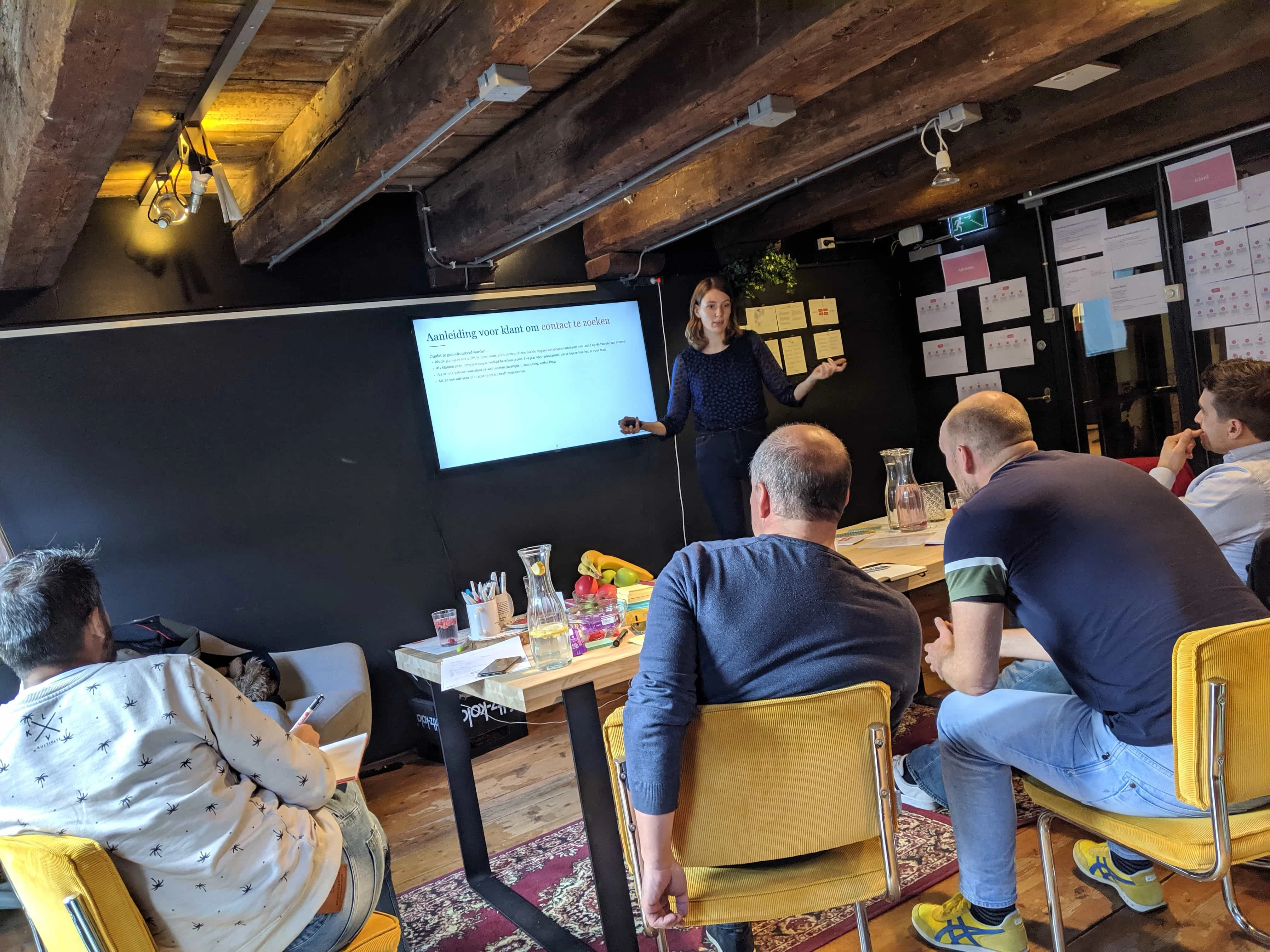
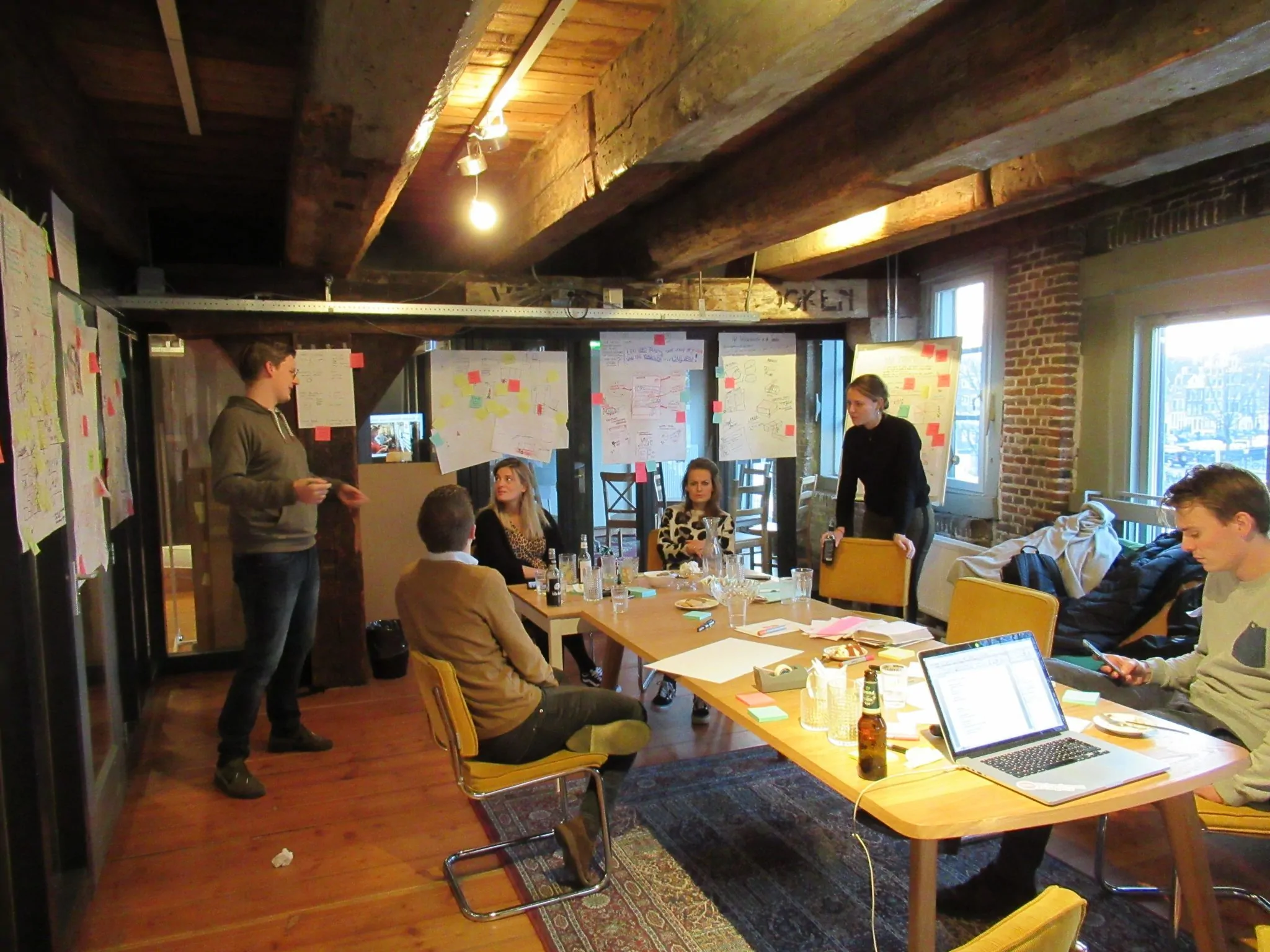
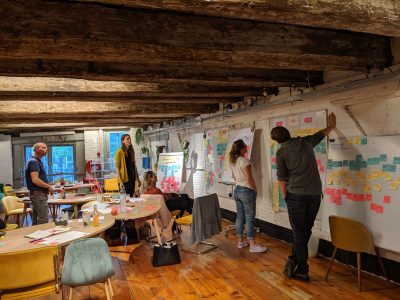
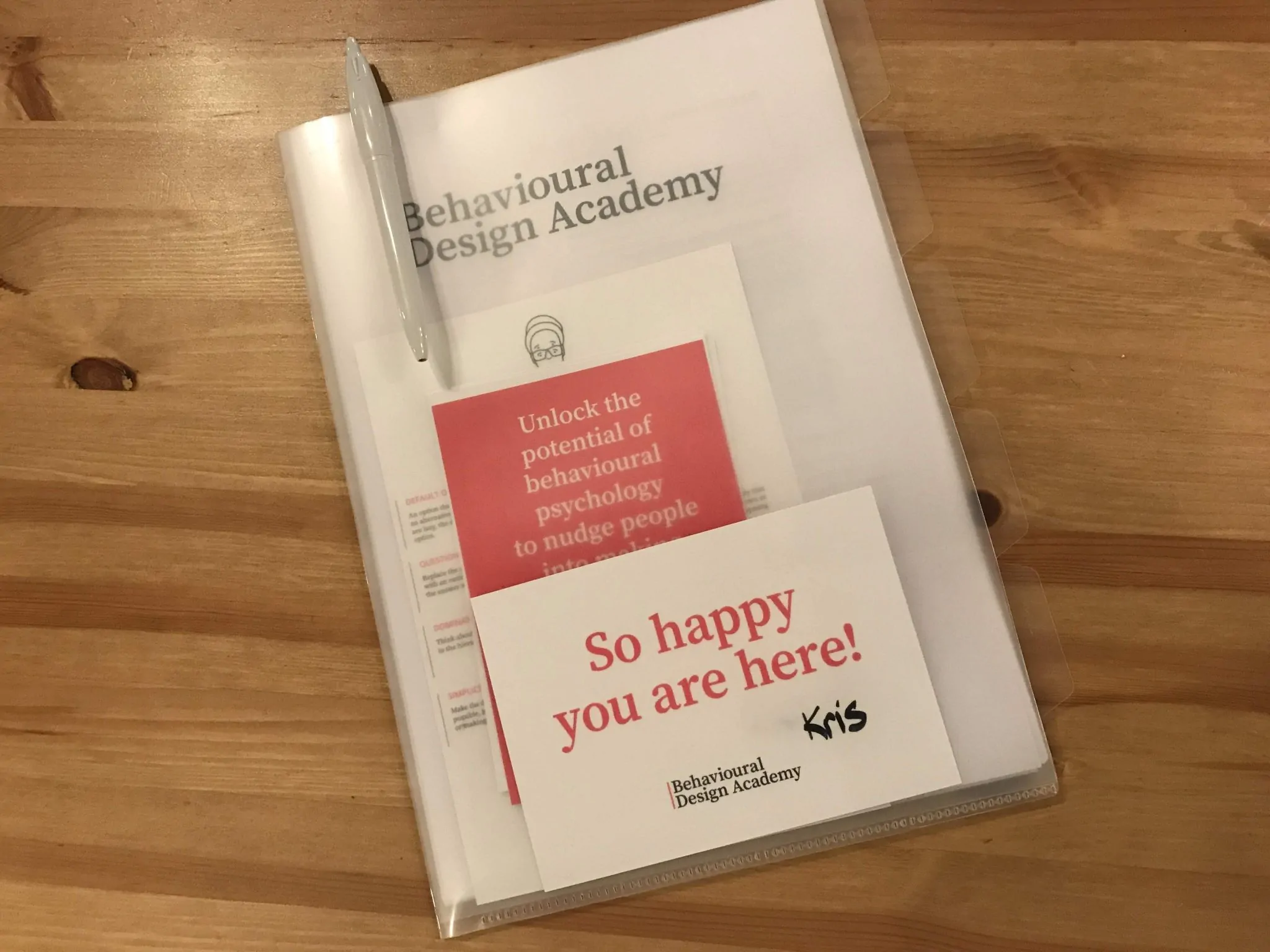
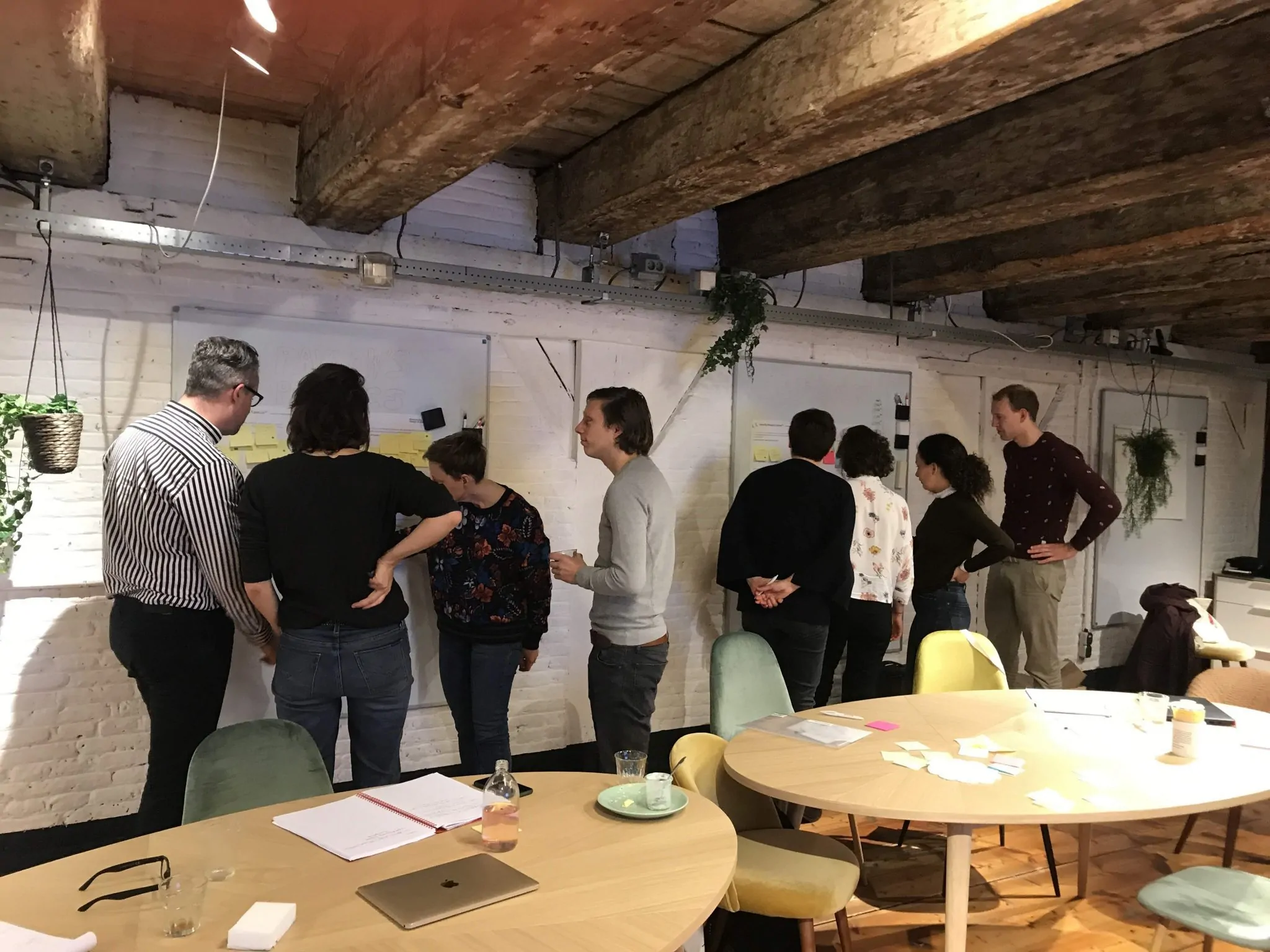
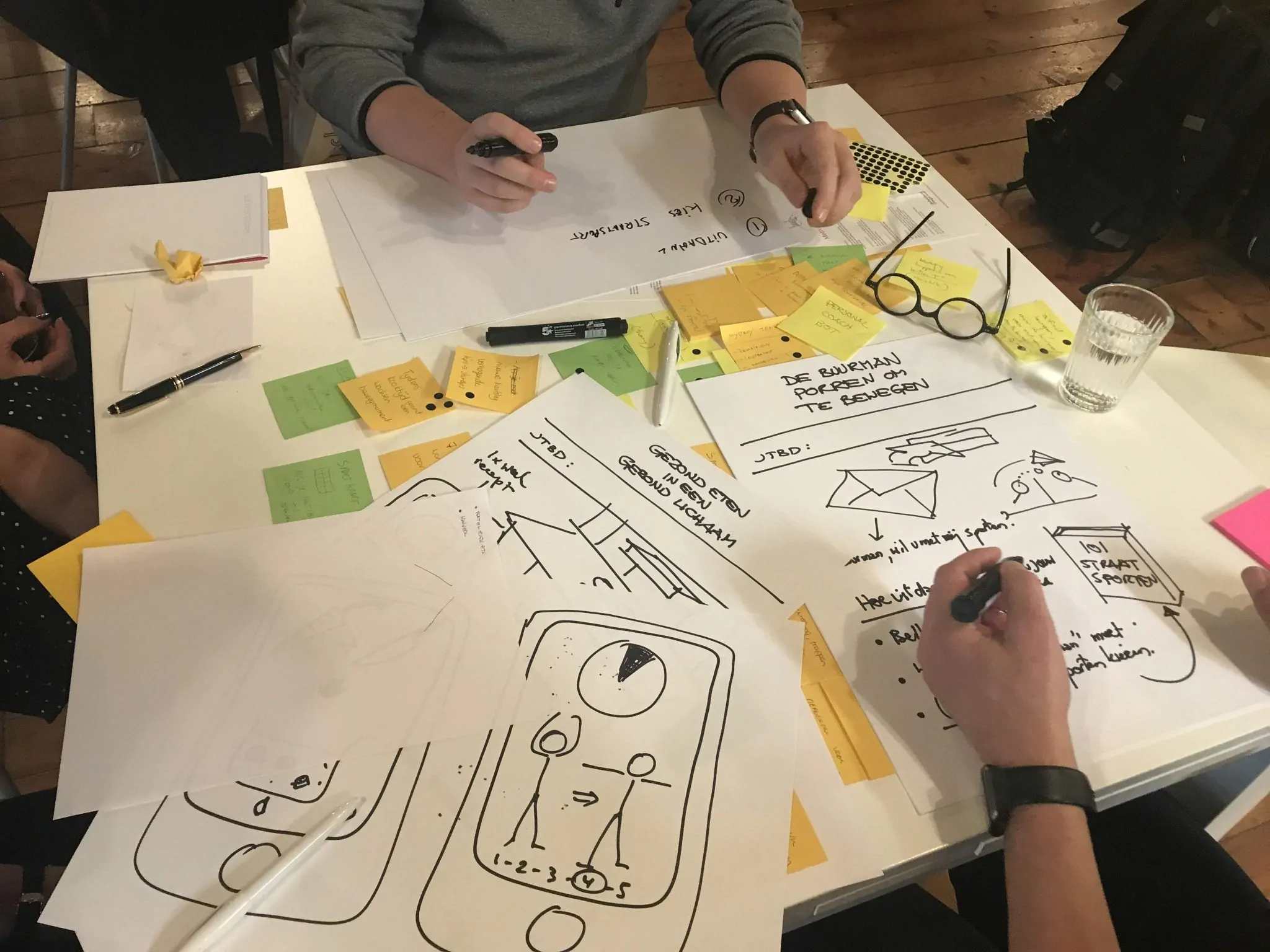
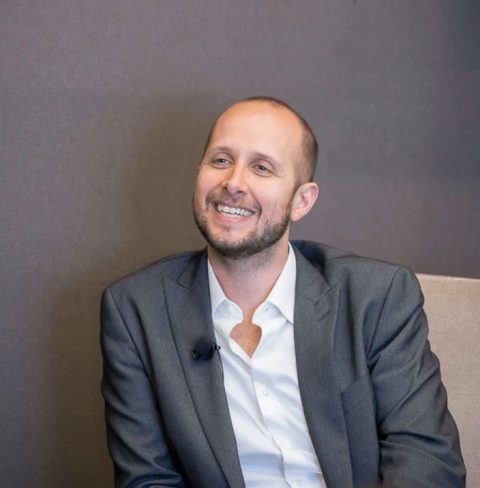
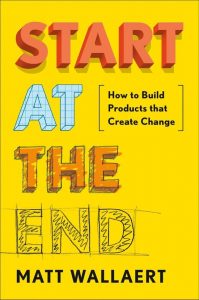


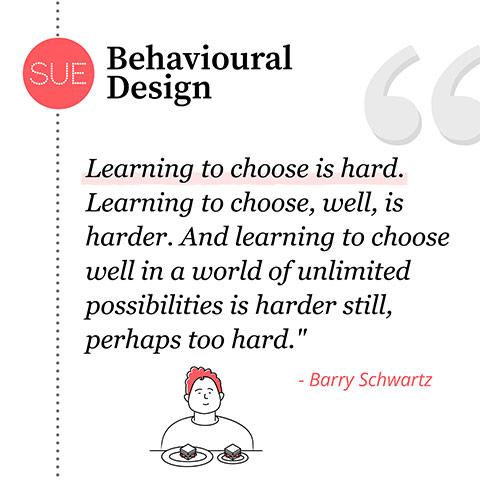
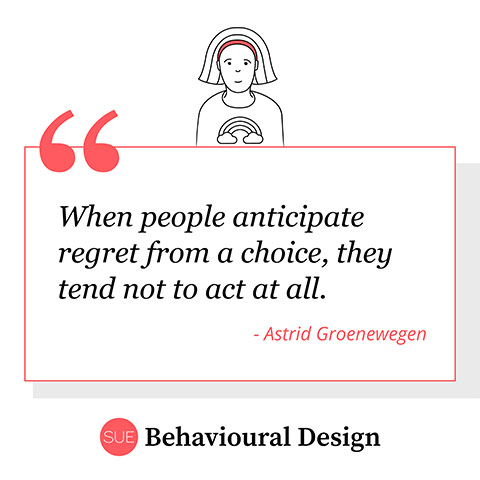 There is a cognitive bias related to this phenomenon called
There is a cognitive bias related to this phenomenon called 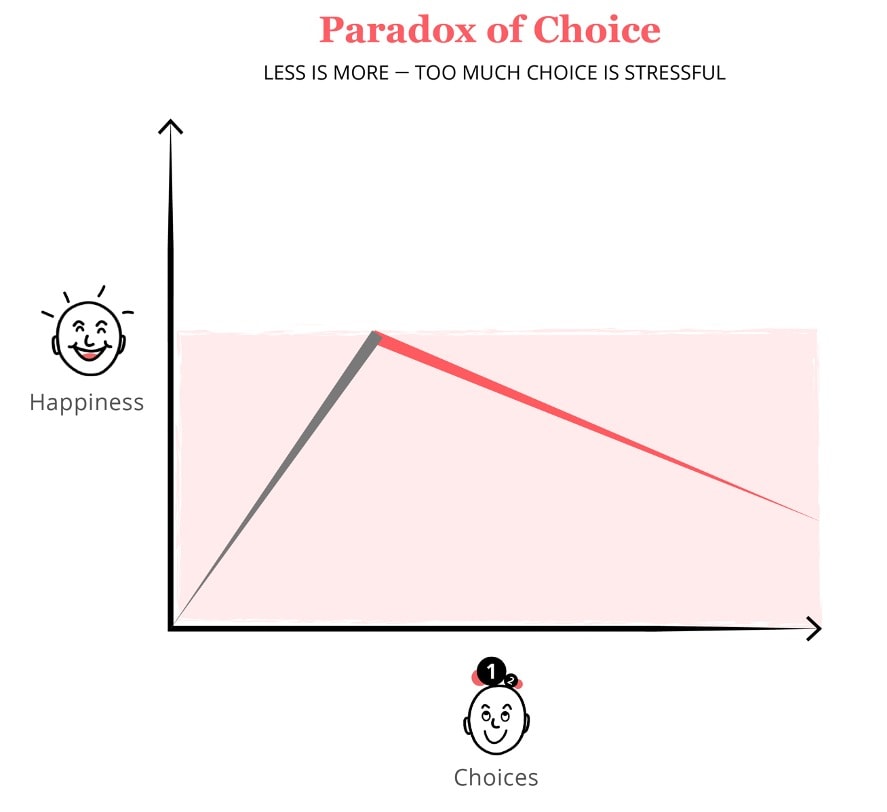

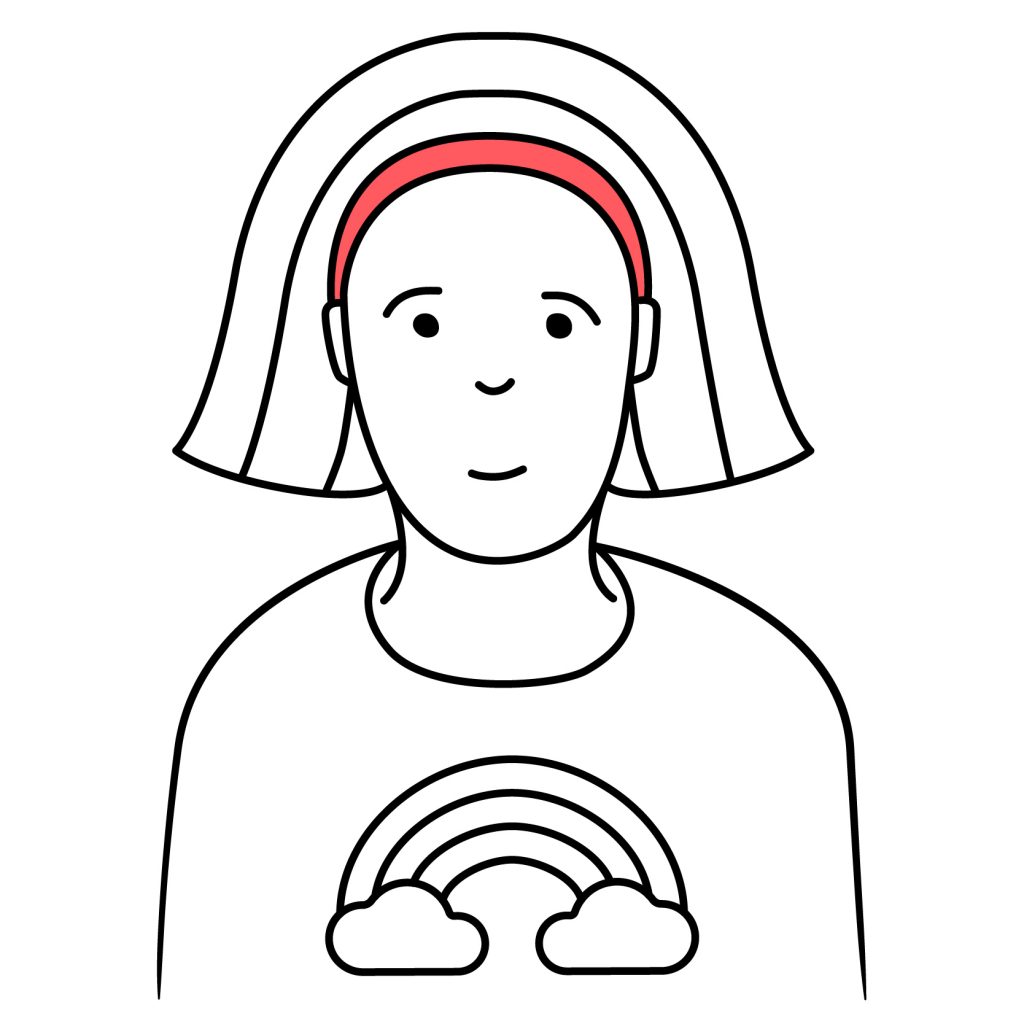
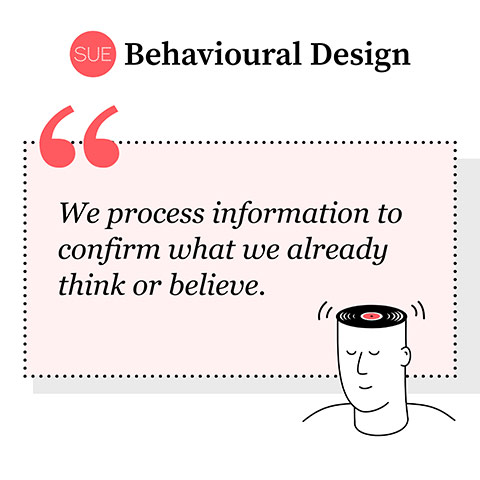
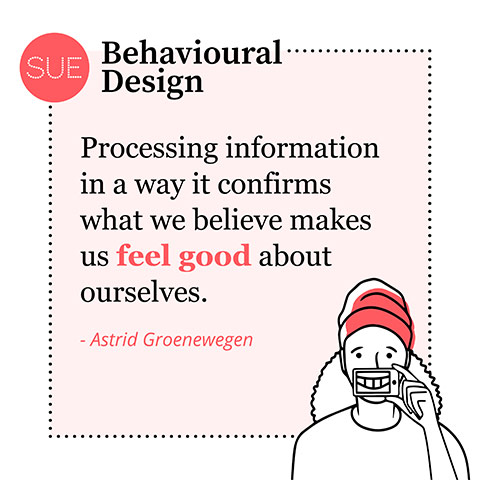
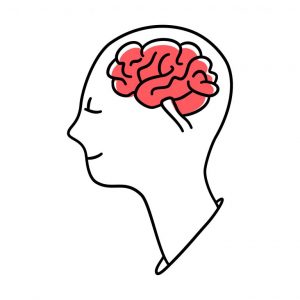 How to convince someone with different beliefs
How to convince someone with different beliefs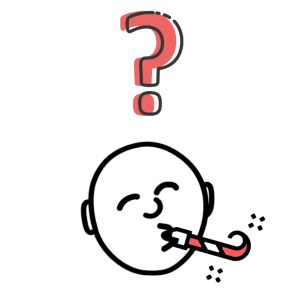
 Bypassing confirmation bias (2): Provide proof not evidence
Bypassing confirmation bias (2): Provide proof not evidence